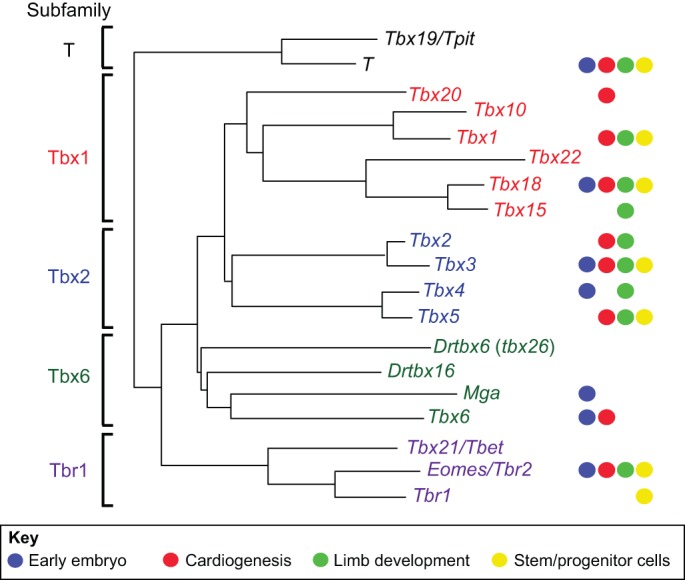Fig. 1.

Phylogenetic tree of the T-box gene family in vertebrates. Colored circles on the right indicate involvement of particular genes in the areas discussed in this Primer; additional roles are indicated in Table 1. All of the genes are represented in human and mouse with the exception of Danio rerio (Dr) tbx16, which is present in birds and frogs (VegT) but not mammals, and Drtbx6. The Tbx6 subfamily is divergent, rendering relationships between members less clear and complicating the assignment of orthology, although analysis of non-sequence information such as the exon-intron structure of a gene or the composition of a gene's genomic neighbors can eliminate ambiguities. Thus, the zebrafish gene tbx24 (fused somites), rather than tbx6, is the ortholog of mammalian Tbx6, and it has been suggested that Drtbx6 should be renamed tbx26 (Ahn et al., 2012). There have also been some gene duplications, which are not indicated here, such as the duplication of T in Xenopus to form Xbra and Xbra3 (Hayata et al., 1999). Common synonyms are indicated after the solidus. The phylogenetic tree is based on and modified from Naiche et al. (2005) and Papaioannou and Goldin (2008).
